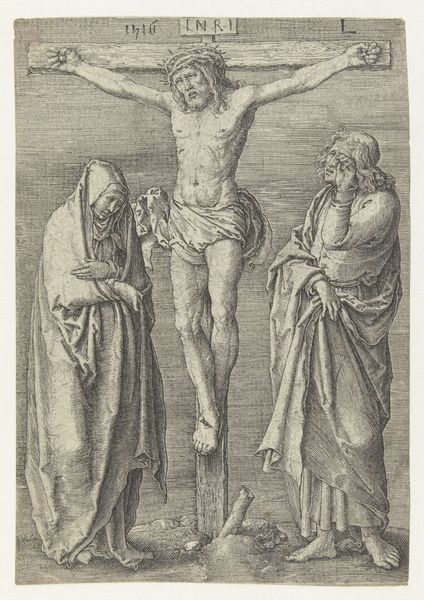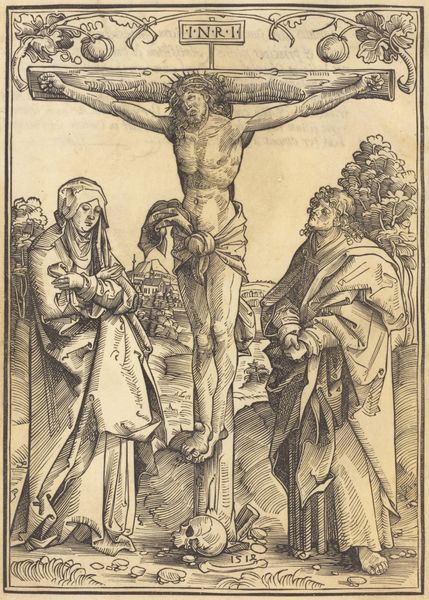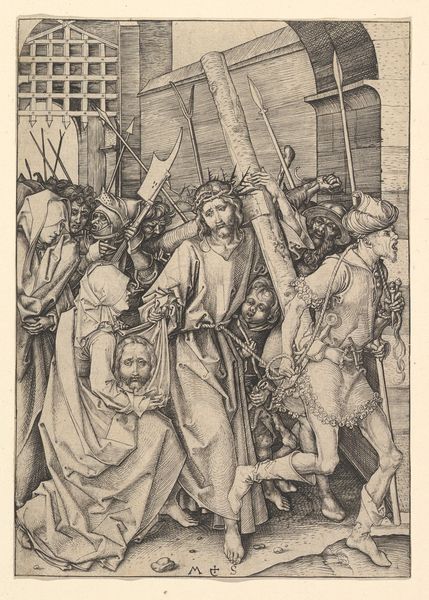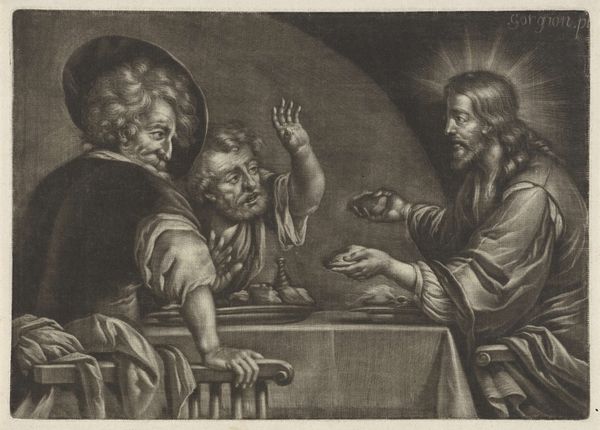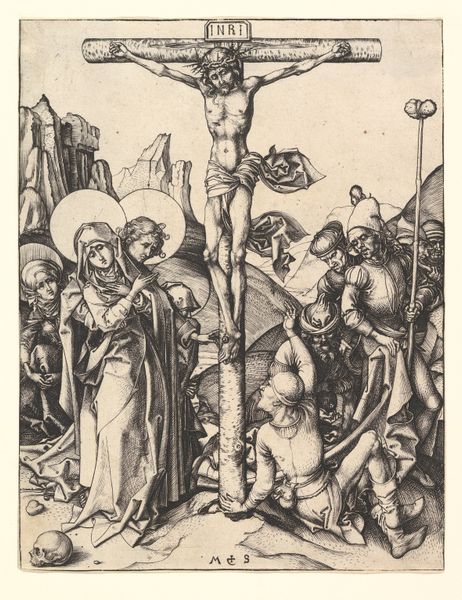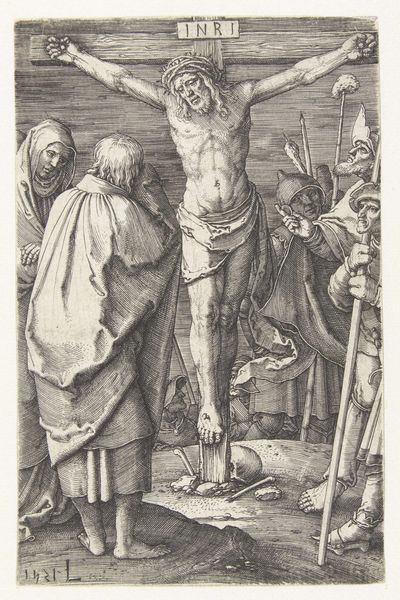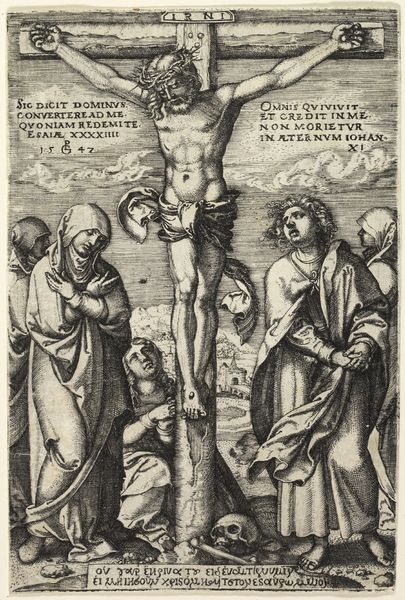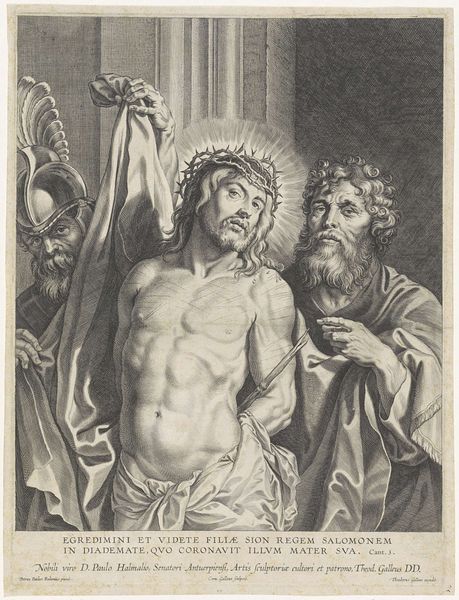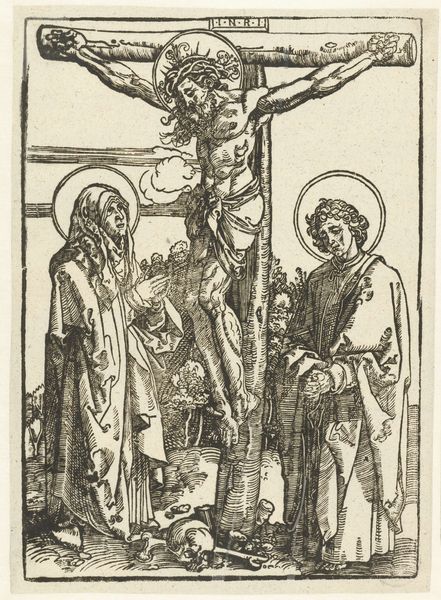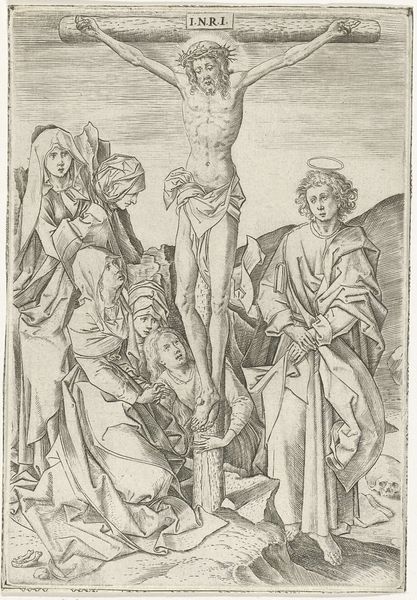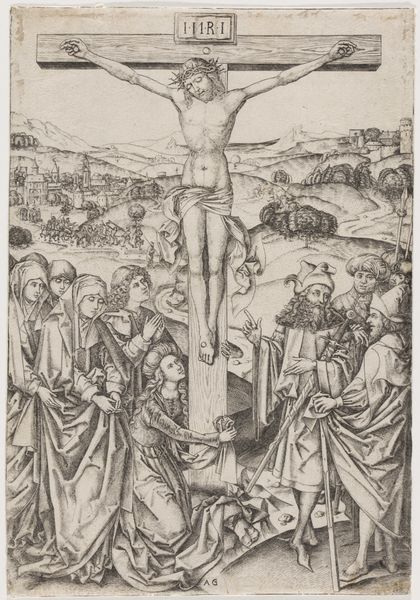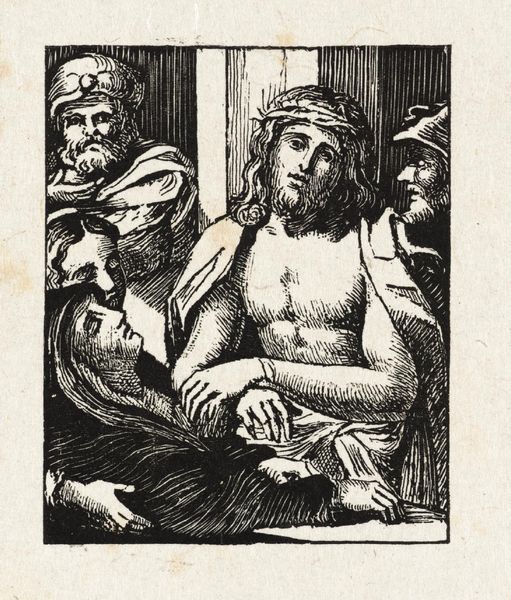
drawing, print, intaglio, engraving
#
drawing
# print
#
intaglio
#
figuration
#
history-painting
#
italian-renaissance
#
engraving
Dimensions: 4 1/16 x 5 11/16 in. (10.3 x 14.4 cm)
Copyright: Public Domain
Curator: Let’s discuss "The Entombment of Christ," an engraving by Agostino Veneziano, likely produced between 1514 and 1536. It's an intaglio print, meaning the image is incised into the surface, allowing for detailed lines and shading. Editor: What strikes me immediately is the sheer weight of sorrow emanating from the figures. The composition is so balanced, yet heavy with grief; each face tells a story of loss and suffering that transcends the religious narrative. Curator: It is compelling how Veneziano translated paint to print. Consider the labor and the social status surrounding the printmaking workshops. This engraving would have been more accessible and reproducible than a painting, allowing wider distribution of this image and its story. The lines create depth through hatching. Editor: Exactly. Consider, then, to whom this image was circulated. During the Italian Renaissance, the Catholic Church’s influence shaped so many lives, especially women's. Grief over the loss of a son mirrors a prevalent societal expectation, a call to the subjugation of mothers in that era. Even the inclusion of those presumed to be 'sinners' around Christ shows his message was universal. Curator: An interesting point regarding accessibility... Though prints are multiple originals they should still be considered luxury commodities due to their specialized artisanal creation process and market audience. One of the supporting characters appears to have metal working tools; tongs and a hammer. Editor: Precisely, these are not simply visual documents; these were agents of cultural inscription! What were women told they could or could not do? Consider those constraints then reflect on the act of enshrining Mary in mourning as archetypal. Curator: These depictions of tools highlight the physical and social circumstances of creating this print as well as all of the human touch involved. Editor: By linking material analysis with socio-historical examination, we gain an in-depth grasp of these objects in all their messy contradictions. We humanize these artistic relics, refusing the myth of genius without roots or biases. Curator: That's it, bringing attention to how they reflect material conditions and artistic choices shaped these narratives in early modern Europe. Editor: Precisely. They allow a crucial perspective for considering whose experiences are reflected within these hallowed walls—and why.
Comments
No comments
Be the first to comment and join the conversation on the ultimate creative platform.
